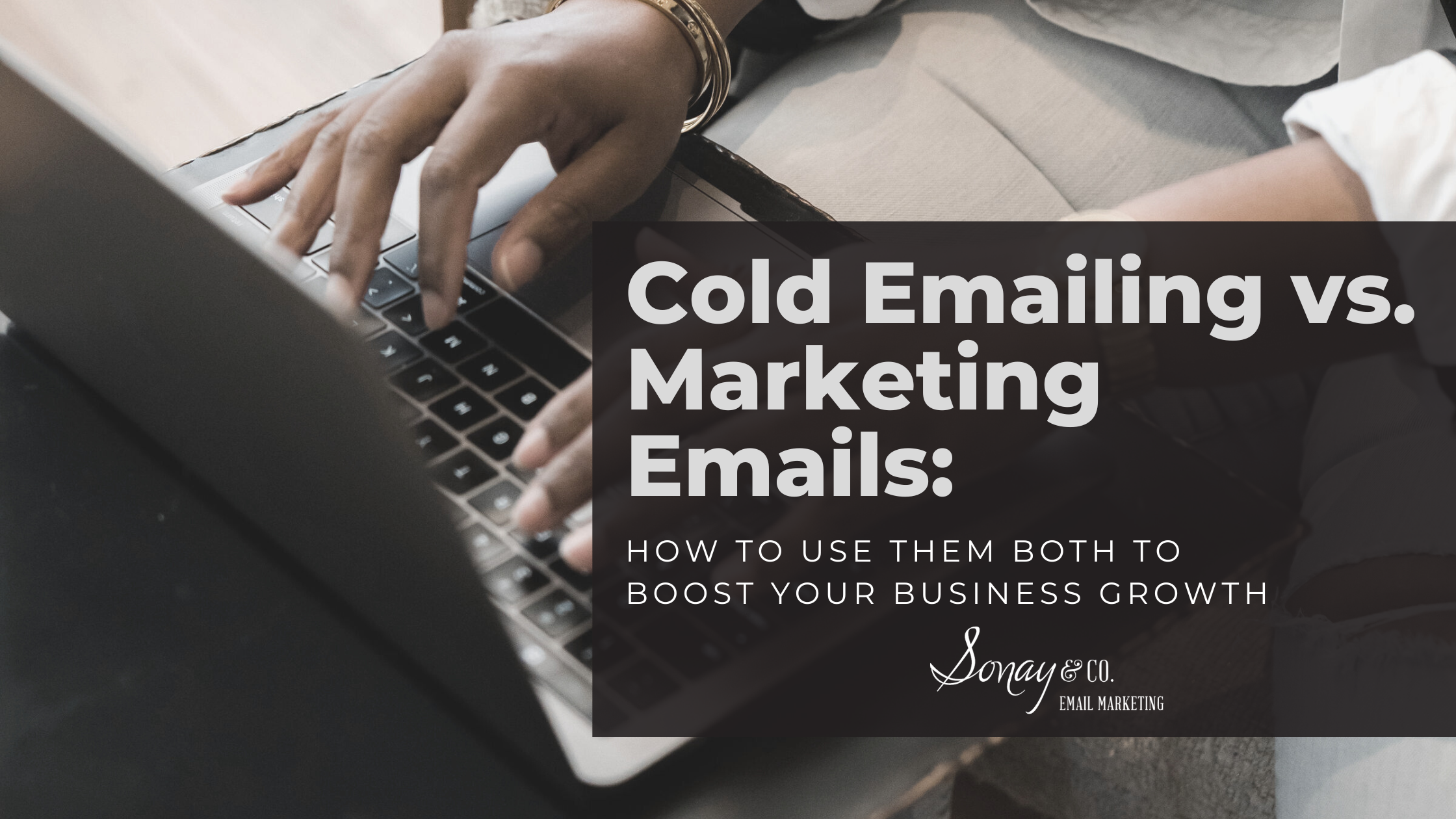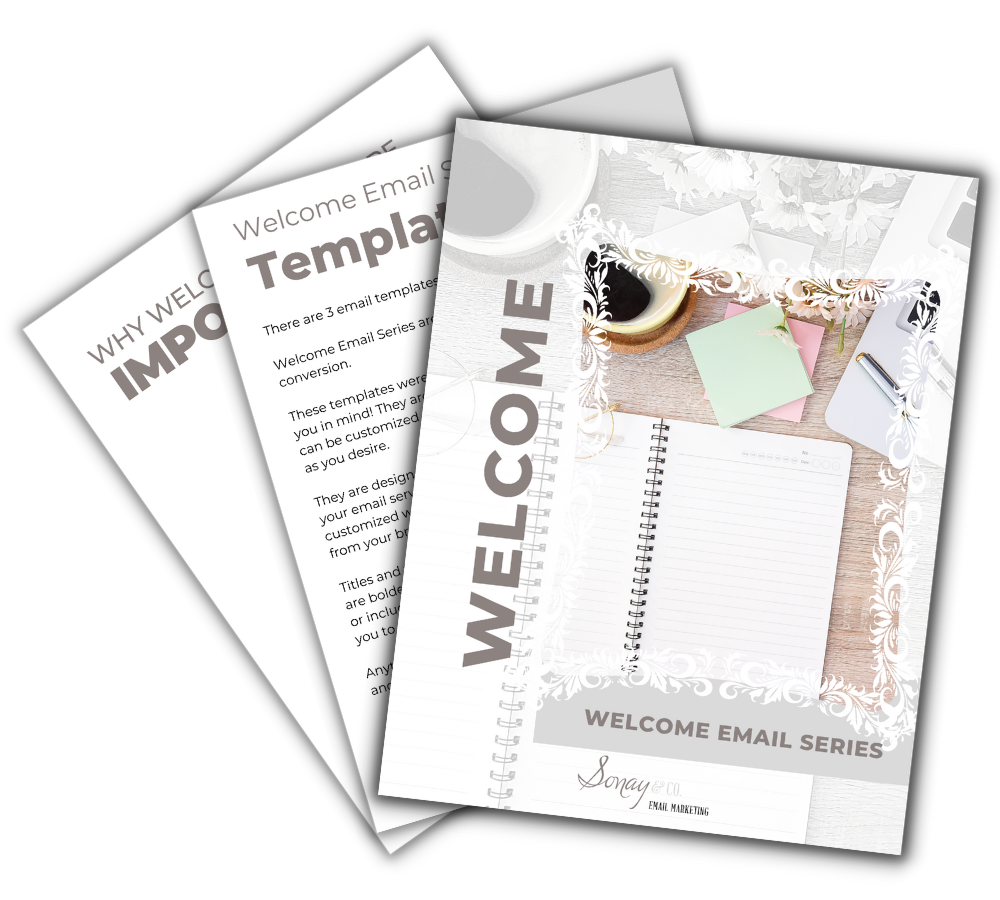Cold Emailing vs. Marketing Emails: Which To Use To Boost Your Business Growth
June 5, 2023
SHARE

Email is a popular business tool to engage potential customers and generate leads. Two common strategies used are cold emailing and marketing emails. While both methods aim to boost sales, their tactics and goals differ. In this post, we will explore the nuances of each approach, comparing their effectiveness, best practices, and when to use them.
What is Cold Emailing?
Cold emailing involves reaching out to individuals or businesses without prior interaction with your company. This is an outbound marketing tactic with the purpose of establishing a connection, initiating a conversation, and ultimately converting them into customers.
Is Cold Emailing the Right Approach For You?
Cold emailing works best when you have a highly targeted list of potential customers or prospects and aim to initiate direct contact to generate leads. It is beneficial for startups, B2B businesses, or sales-driven organizations.
Where Do You Find Prospective Leads for Your Cold Emailing Approach?
Here are some effective methods and platforms to help you identify potential leads:
- Targeted LinkedIn Searches: LinkedIn is a powerful platform for professional networking and lead generation. Utilize advanced search filters to narrow down your target audience based on criteria such as industry, job title, location, and company size. Once you’ve identified potential leads, you can gather their contact information and initiate your cold email campaign.
- Industry-Specific Directories: Explore industry-specific directories and listings relevant to your target market. These directories often provide valuable information about companies, key decision-makers, and their contact details. Examples include industry associations, trade publications, and online directories specific to your niche.
- Social Media: Use social media platforms, particularly Facebook and Instagram, to identify individuals or businesses expressing relevant interests, challenges, or needs related to your products or services. Engage with them by providing helpful insights and initiate a personalized cold email conversation if appropriate. This can also be done via the DM (direct messaging).
- Attend Networking Events and Conferences: Participate in industry-related events, conferences, and seminars. These events offer valuable opportunities to meet potential leads face-to-face and collect their contact details for future cold emailing. Be sure to follow up with a well-crafted email highlighting the discussion or connection made during the event.
- Customer Referrals and Recommendations: Leverage your existing network and customers for referrals and recommendations. A satisfied customer or contact who believes in your products or services can introduce you to potential leads who may be interested in your offerings. Personalized introductions often yield higher response rates when initiating a cold email campaign.
- Online Communities and Forums: Engage with relevant online communities and forums related to your industry or niche. Try looking at platforms similar to Reddit. These platforms allow you to connect with like-minded individuals, understand their pain points, and identify potential leads. Contribute value by sharing insights, answering questions, and offering assistance. Over time, you can identify prospects and initiate cold email conversations.
- Lead Generation Tools & Services: Several lead generation tools and platforms can assist in finding potential leads for cold emailing. These tools allow you to search for leads based on specific criteria, gather contact information, and sometimes even provide additional data about the leads. Or you can outsource and have a lead generation service provider find a list of prospects for you.
To improve the success of cold emailing, consider the following key aspects:
- Personalization: Addressing recipients by name and mentioning relevant details can increase response rates.
- Targeted Outreach: Research and identify your ideal prospects before sending cold emails. Understanding their pain points, needs, and interests allows you to craft tailored messages that resonate with them.
- Follow-Up Strategy: A well-structured follow-up sequence is crucial in cold emailing. Polite and concise follow-up emails can improve response rates and build rapport with potential customers.
What Are Marketing Emails?
Marketing emails are only sent to people who have given their email addresses voluntarily or have an existing connection with your company. This inbound marketing tactic includes the types of emails that are intended to cultivate relationships, inform customers about your products or services, and encourage them to make a purchase. If you are looking for marketing email support, check out our services.
Is Marketing Emails the Right Approach For You?
Marketing emails are ideal for nurturing existing relationships, keeping your brand top-of-mind, and providing value to your customers. They work well for established businesses, e-commerce companies, and those looking to engage and retain customers.
Where Do You Find Prospective Leads for Your Marketing Email Strategy?
Here are some effective methods and platforms to help you find potential leads for your marketing email campaigns:
- Opt-In Subscribers: Start by leveraging your existing customer base and website visitors. Encourage visitors to subscribe to your newsletter or mailing list through opt-in forms on your website. This way, you can capture the contact information of individuals interested in your products or services. Ensure the opt-in process is straightforward, transparent, and compliant with relevant data protection regulations.
- Content Upgrades and Lead Magnets: To attract potential leads, offer valuable content upgrades or lead magnets on your website or blog. These can be e-books, whitepapers, guides, templates, or exclusive access to resources. Interested visitors can provide their email addresses in exchange for accessing the content, allowing you to build a targeted list of leads interested in your specific industry or topic.
- Social Media Lead Generation: Leverage social media platforms like Facebook, Instagram, LinkedIn, and Twitter to reach and engage with your target audience. Utilize compelling calls-to-action and lead-generation forms or landing pages within social media platforms to capture the contact information of interested individuals. Engage with your audience through valuable content, discussions, and interactions to build trust and encourage sign-ups.
- Webinars and Events: Host webinars or participate in industry events where attendees can register or provide their email addresses to join. Webinars provide an excellent opportunity to showcase your expertise, address pain points, and collect contact information from interested participants. Similarly, events like trade shows, conferences, or workshops allow you to connect with potential leads and capture their details for future marketing emails.
- Referral Programs: Implement a referral program where existing customers or subscribers can refer their friends or colleagues to your offerings. Incentivize referrals with rewards or discounts for successful conversions. This approach leverages the trust and network of your satisfied customers, increasing the chances of acquiring new leads through word-of-mouth marketing.
- Partner Collaborations: Collaborate with complementary businesses or industry influencers to expand your reach and tap into their audience. Co-create valuable content, joint webinars, or cross-promote each other’s offerings. This way, you can access a new pool of potential leads who have already shown interest in similar products or services.
To make your marketing emails more effective, you should consider the following tips:
- Segmentation: Divide your email list based on demographics, interests, or past interactions. This will help you tailor your emails to each segment, ensuring they receive relevant content that resonates with their needs.
- Valuable Content: Provide valuable and engaging email content, such as newsletters, updates, promotions, and educational materials. This will showcase your expertise and establish trust with your audience.
- Call-to-Action: Include clear and compelling calls-to-action (CTAs) in your emails to encourage recipients to take desired actions, such as making a purchase, signing up for a webinar, or downloading an e-book.
Important Rules to Follow For Both Cold Email and Marketing Email Campaigns.
When implementing any email marketing strategy, it’s crucial to consider the legal aspects and regulations surrounding data privacy. The General Data Protection Regulation (GDPR), enforced in the European Union (EU) and applicable to businesses worldwide dealing with EU citizens’ data, has a significant impact on how emails are sent and managed.
It’s essential to ensure that your lead generation methods align with applicable privacy regulations, such as GDPR.
Always respect individuals’ privacy and obtain necessary consent before using their contact information for cold emailing. Under GDPR, cold emailing requires a legitimate interest or explicit permission from the recipients. Legitimate interest means you must have a valid reason to contact the individuals based on their potential interest in your products or services. Explicit consent implies that the recipients have willingly consented to receive your emails.
Include a way for a recipient to opt out of receiving even your cold emails, such as advising they can opt out of receiving communications by replying to the email.
Always prioritize permission-based marketing practices and adhere to relevant data protection regulations when collecting and using contact information for marketing emails. This is why you should avoid purchasing an email list. Building an engaged and quality email list will yield better results and long-term relationships with your leads.
Marketing emails fall under the purview of GDPR. To comply, you must ensure that individuals on your email list have explicitly opted in to receive communications from you. Additionally, you need to provide clear and transparent information about data collection, storage, and usage practices and offer an easy opt-out mechanism.
While implementing cold emailing and marketing emails, it is vital to prioritize GDPR compliance. Familiarize yourself with the regulations, understand the requirements for obtaining consent, and implement robust data protection measures. By doing so, you can maintain the trust of your audience, minimize legal risks, and build a solid foundation for your email marketing campaigns.
Conclusion
When it comes to email marketing, there is no clear winner between cold emailing and marketing emails. Both methods have their own strengths and can be effective in different ways. Cold emailing is best for generating leads and making direct contact with potential customers, while marketing emails work well for building and strengthening existing relationships and driving conversions. It’s important to know your goals, target audience and create personalized and valuable content that resonates with your recipients. By combining both strategies effectively, you can use email marketing to its full potential and grow your business.
SHARE

Need help...
creating your Welcome Email Series? Receive a complete three-email welcome series. Easily customizable with a few edits. Your welcome series templates and bonus materials are ready for download!
